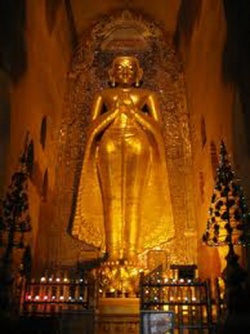Difference between revisions of "Fa-yün"
m (Text replacement - "Liang" to "Liang") |
m (1 revision: Robo text replace 30 sept) |
(No difference)
| |
Revision as of 13:45, 30 September 2013
Fa-yün
[法雲] (PY Fayun; Jpn Houn)
(1) (467-529) A priest revered as one of the three great Dharma teachers of China's Liang dynasty, the others being Chih-tsang and Seng-min. He joined the priesthood in 473 and studied under Seng-yin. He gained renown with his lectures on the Lotus Sutra and the Vimalakirti Sutra in 496, and in 508 Emperor Wu appointed him chief priest of Kuang-che-ssu temple. The emperor often invited him to lecture at court. Emperor Wu built Fa-yün-ssu temple for him in 519, and in 525 Fa-yün was appointed general administrator of priests, the highest rank in the priesthood. He also wrote a commentary on the Lotus Sutra titled The Meaning of the Lotus Sutra.
(2) (1087-1158) A priest of China who compiled A Dictionary of the Pronunciation and Meaning of Buddhist Terms, a Sanskrit—Chinese Buddhist dictionary, in 1143. He is said to have spent some twenty years compiling the text. He also lectured on the Lotus, Golden Light, Nirvana, and Vimalakirti sutras.
